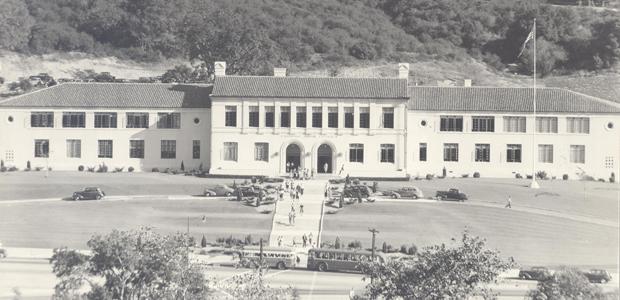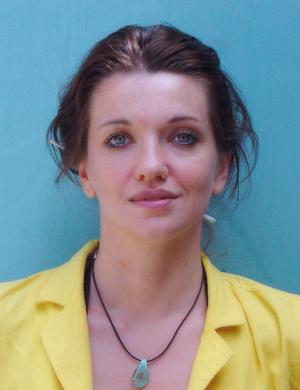Glendale City College celebrates its 85th anniversary this year. Those who witnessed the founding of GCC or studied during the first years of the college are no longer with us but thanks to the archives in the GCC library, the early years in the campus aren’t a mystery.
In 1920, development in Glendale became active. Banks, stores, and automobile showrooms invaded the city. Construction of the Alex Theatre in 1925 stimulated the rise of culture in Glendale. A couple of years later, the city got its own Grand Central Airport and Southern Pacific train depot.
With its population 2,746 in 1910, 13,576 in 1920 and 62,736 in 1930, Glendale became known as the “ fastest growing city in America”. The city was in dire need of local higher education.
City Councilman John R.Grey brought the idea of new college to the Glendale Unified School District board of trustees on behalf the interest of La Crescenta, Glendale and Tujunga cities. The Board decided to establish a ”junior college course.” In Sept.13, 1927, Glendale Junior College opened, however, because it did not have its own building, it had to move into the local high school at Verdugo and Broadway.
Only 139 students and nine faculty members were part of the college in its first year. Classes included English, foreign languages, mathematics, science, social science, commerce and mechanical arts. George Moyse was elected as a principal of the new college. His wife, Ethel Hume-Flood Moyse, was named as the dean of women.
In 1929, new homes were prepared for the college. The school moved to Harvard, located at the place of Glendale Public library.
Many of the original college rules and regulations stayed with us until today. The college policy was formed in first years of college, and did not experience big changes until now. Clubs were very popular , but they had more abstract names than today and membership was free.
However, the acceptance rules were more strict. Alpha Gamma Sigma, Vaquero Riders, Cosmopolitan Club, Radio-Drama Club, Bible Club, Aviation Club were open for students with good grades.
The Code of Honor was so influential in the junior college that any professor could easily leave his students during a test and come back just in the end of the class.
Dances were one of the favorite pastimes for students. The college events were created not just for entertaining students but also for developing and polishing their good manners. Hell Week, Corral Day, Spring Sport Day, Slay Day, Round Up Day and the Cotton Dance brought together new and old students.
During the first years of existence of the college, the war between sophomores and freshmen was severe. The Sophomore Vigilance Committee was organized.The Committee published a Codex of rules that freshmen called “Obey Frosh Rules Obey.” It was posted everywhere around the campus and printed in the campus newspaper, the Galleon. The rules demanded a freshman to wear a dink all the time. Mike Eberts, professor of Mass Communications writes in his article, “Glendale Junior College: The First Decade”, that dinks were “intentionally ridiculous looking green beanies with a small visor—were an emblem of the rivalry between sophomore and freshman.”
In the fall of 1930, the college saw a sheet of paper with “frosh” painted over it and lifted on the top of the campus flagpole. It was a riot of freshmen. For revenge, sophomores kidnapped the freshman vice president for a few hours. After the exhortations of administration and faculty, the vice president was released.
An earthquake in 1933 changed plans of the college. The college was considered not safe enough in its current building on Harvard and classes had to move into tents. For three years from 1934 to 1937 classes were conducted in 15 bungalows.
Chester Lynch in his “ History of Glendale City College” writes, “If you were not particularly interested in what your instructor was saying, you could listen to instructors in the tents on either side, two or one over you wished.”
Among the three options of sites for the construction of the future campus of Glendale College, Verdugo site was chosen. And finally, in 1937 the college moved to its first own home. The Administration building and science building, called Real Camino Building were first opened for students.
The college newspaper, the Galleon, was renamed to El Vaquero and college colors were changed.
In 1938 few new courses were added to the curriculum of the college: History of Art, Modern Art, Elements and Principles of Art, House Design and Decoration, History of Aviation, Theory of Flight, Aerodynamics, Construction of the Airplane Engine, Modern English and Social English.
By the 1940s, the college counted 1344 students for the day and evening programs.
That all changed when World War II arrived. The war slowed down every single aspects of living, with no exception for education.
The college barely survived the war. Enrollment dropped to 312 in 1943 and the proportion of women to men was 29:1. The enrollment situation stabilized after the war finished in 1948.
GCC’s Alma Mater is filled with atheletic greats such as: swimmer Cathy Ferguson, two-time Olympic gold medalist, Juno Stover-Irwin, four-time Olympic diver, Frank Clifford Wyckoff, triple Olympic gold medal winner in 4×100 meter relay Bob Gagliano and Andy Reid, head coach of the Philadelphia Eagles.
Famous entertainers who were former students of GCC include Ryan Seacrest, Eva Mendes, Sean William Scott and Dan Harmon.
Since its opening in 1927 with a little more than a hundred students, GCC is now home to more than 15,000.
GCC is still expanding, new construction plans are waiting for completion next year and despite all financial difficulties, the college continues to accept new students and produce professionals in different fields.


